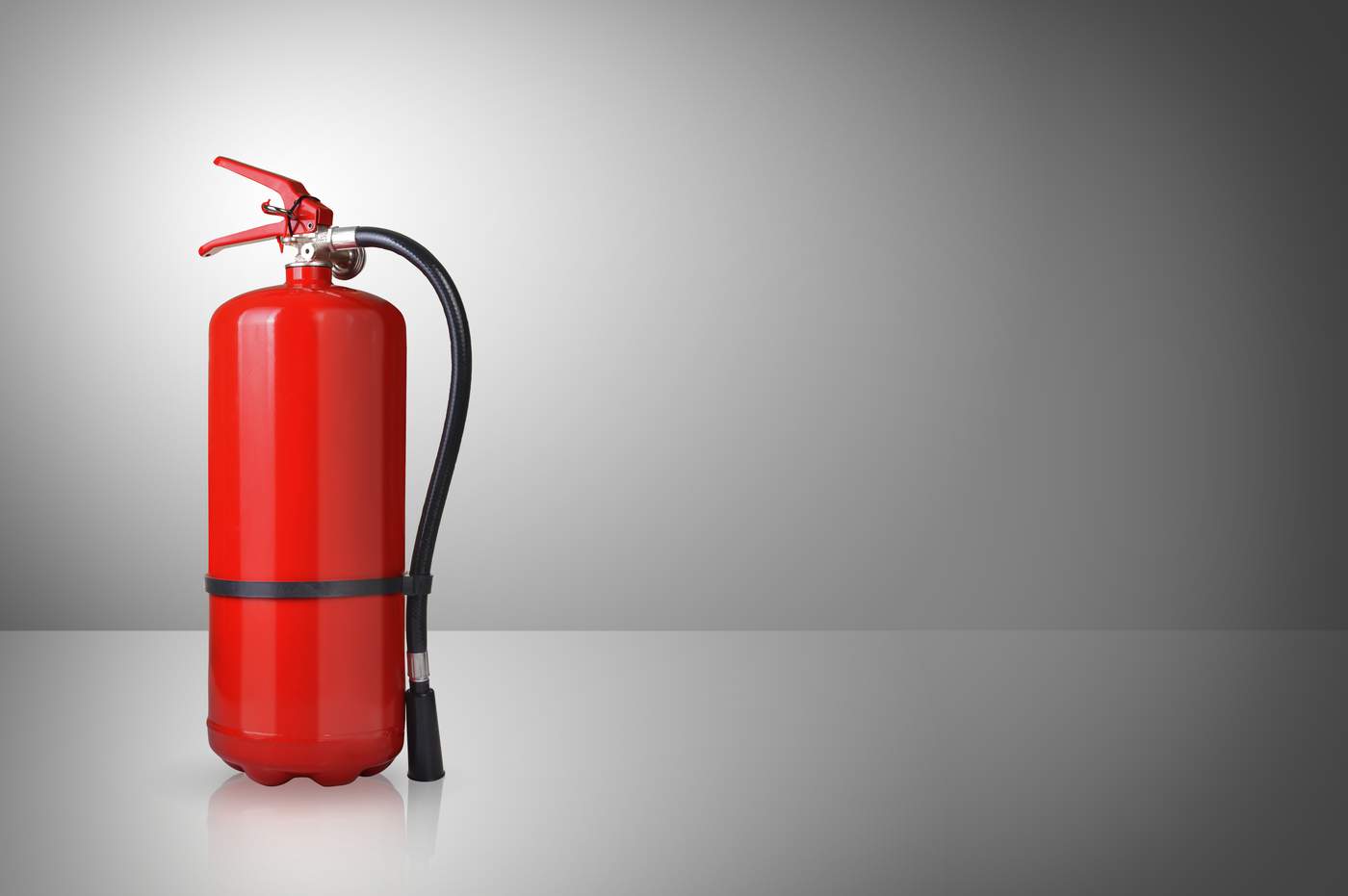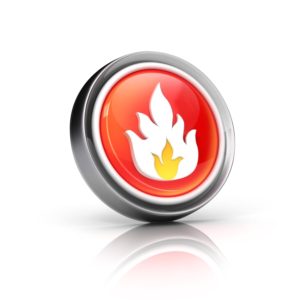
Fire extinguishers provide a prompt and effective response to an emergency, and they create peace of mind as well. The sense of security that they offer may instill confidence that a rapid, defensive act can protect a home from peril. A dangerous intrusion that disrupts the sanctity of your home, fire requires an immediacy that allows no time for delay.

The preservation of the quiet enjoyment of a safe and protected home welcomes family and friends, and safety measures can help ensure it. With the ability to save lives and property, fire extinguishers deserve a place in every home. Click here for the Top 10 Best Fire Extinguishers.
Controlling Combustion
Different types of fire extinguishers provide an effective defense against fires that start in organics such as wood and paper, and they can control others that originate in cooking oils, flammable liquids or gases and metals. The components that must interact at the same time to start a fire include fuel, heat and oxygen, the same elements that create internal combustion in a car or lawnmower engine.
A significant difference lies in the confines and control that an internal combustion engine provides but which homes cannot offer. Five main types of extinguishers can shut down a fire by suppressing at least one of the contributing components.
Water Based – For use on paper and wood, plastics, coal, rubber and soft materials, the water extinguisher suppresses a fire by saturating its fuel. Not recommended for putting out fires that originate in cooking oils, flammable liquids or metals, the jet or spray nozzle delivers only water. However, some types may contain additives that give it more suppressive power.
Spray – An effective suppressant for fabric, coal, paper, plastic or wood, the water spray extinguisher produces a fine spray over a broader area than a jet nozzle provides. Some models may contain surface-active agents that increase the solubility of the water.
Mist – By using a unique type of nozzle, a water mist extinguisher sprays microscopic particles that deplete the oxygen supply and suffocate a fire. It has an added benefit of producing a wall of mist that helps shield the user against the heat.
Foams – Highly effective on wood, paper and cardboard, fabrics, coal and plastics, the foam extinguisher blankets the fuel that feeds the fire and cools it. The foam can extinguish the fire on burning petroleum products or paint, but it does not work well on kitchen fires or flammable metals.
Dry Powder – A versatile extinguisher, the dry powder model can help suppress fires that start in wood and coal, cardboard and paper, fabrics, flammable liquids, metals and even electrical equipment. Not recommended for enclosed spaces such as kitchens with cooking fires, the dry powder may create problems if inhaled.
Wet Chemical – A multipurpose device, the wet chemical extinguisher can suppress fires from cooking fats and oils as well as organics such as paper, wood and cardboard, fabrics and coal. The quelling effect that it produces results from separating the fuel from its oxygen supply.
Carbon Dioxide (CO2) – With the primary purpose of suppressing electrical fires, the carbon dioxide extinguisher provides effective control of burning alcohol, solvents, flammable gases, tar, petroleum grease and oil-based paints. The carbon dioxide contents exercise suppression by suffocating the fire and displacing the oxygen that feeds it.
Matching Extinguisher to Class of Fire
Experts who study the properties of fire scientifically assign a classification to provide access to knowledge about the best way to control it. Each type of fire extinguisher has a unique design that contains contents that can suppress fire in the materials in the different classes. A large and visible letter on the side of the extinguisher clearly shows which type of fire its contents can suppress.
• Class A
Combustible materials in Class A fires include fabrics, wood and paper, rubber, cardboard and some plastics. Water can extinguish fires by cooling the fuel that feeds them, producing ashes when the embers burn out.
• Class B
A difference between fuels that feed Class B fires defines flammable liquids as those that can burn at room temperature and combustible liquids that require heat for ignition. Suppression of fires in solvents, oil-based paints, tars, oils, grease and alcohol requires a foam barrier that separates them from the oxygen that powers them.
• Class C
Capable of suppressing fires in Class A and B, the Class C extinguishers involve electrical equipment. A conductor of electricity, water poses hazards in some Class C fires.
• Class D
Fires that involve combustible metals reach extremely high flame temperatures, and water can make them burn hotter or even explode.
• Class K
While cooking appliances and combustible oils create the highest incidence of residential fires, the most common type of fire extinguisher does not provide the best way to suppress them. Class K suppresses the most common type of residential fire.
Choosing the Right Size Fire Extinguisher
The experienced professionals on This Old House recommend different weights of extinguisher that can accommodate needs in the areas where fires most often occur. A garage or home workshop needs a canister with 10 pounds of content to handle a fire that may not attract attention immediately. Kitchens and laundry rooms need a five-pound extinguisher that lets anyone grab and use it with ease. A two-pound disposable model mounted in the trunk of a car can handle roadside emergencies.
Guidelines for Fire Extinguisher Placement
Your kitchen needs access to a fire extinguisher within seconds because of the likelihood of cooking fires, and other areas have an equally important reason to have one as well. Fires in master bedrooms often occur at night, making it a trap that offers no escape route. Each floor of a home needs at least one, and every bedroom needs one. Laundry rooms can pose a risk if the dryer exhaust and lint tubes contain particles that can catch fire, making access to an extinguisher essential.
In your garage or workshop, cans of gas or paint can become explosive when a spark reaches them, and power tools can provide it. Open grilling on your patio or burning wood at your hearth offers companionship and enjoyment, but they require the presence of an extinguisher if they send sparks flying. Utility rooms often receive only a limited amount of traffic, but an electrical panel, water heater, furnace or other equipment in them may need an extinguisher on quick notice.
Learning How to Use a Fire Extinguisher
The Federal Emergency Management Agency recommends using “PASS” to remember the proper way to use a fire extinguisher.
• P stands for pulling the pin. Point the nozzle away from your body and release the locking device.
• A reminds you to aim low. You want the contents to hit the base of the fire.
• S means to squeeze the lever slowly, and the release of contents works better if you hold it steady.
• S stands for sweeping the nozzle from one side of the fire to another.
Refilling and Recharging Your Fire Extinguisher
Easy access to your extinguisher makes it a vital part of your home safety program, and you can help ensure it by removing any obstacles that may slow your progress in reaching it. Routine maintenance after each use contributes to safety as well. Choose an extinguisher that shows you the level of pressure on a gauge to make sure that it does not get too high or too low. The working parts must remain in excellent working condition without showing any signs of damage, rust or dents.
A clean extinguisher works efficiently and gives a pleasant appearance in your home without any grease, dust or oil on its exterior. It requires your attention at least occasionally to shake it every month or to get a pressure test every few years. Local fire stations can refill or recharge your fire extinguisher or recommend someone who can, and it may cost $20 or less.
Checking on Fire Extinguisher Pricing
Prices vary according to the use that you intend for your extinguisher. A single-use model costs less than $20, and one that you can use for multiple events costs up to $75. Single-use devices for your car or kitchen may require up to $20. You may expect to spend up to $800 for an extinguisher that can put out Class A, B, C and D fires with extra strength.
Ensuring Performance with Inspection
Fire extinguishers need an annual inspection to make sure that they have the recommended pressure, a full level of extinguishing agent and all external parts in working order. Maintenance after six years requires the removal of all contents. Disassembly of the components allows for cleaning, lubrication or replacement of defective parts.
Refilling and recharging complete the inspection. In a 12-year maintenance routine, hydrostatic testing confirms the ability of an extinguisher to hold pressure safely. The hydrostatic test adds a step to the requirements of the 6-year inspection at the 12-year interval.
Some Final Thoughts
The second week of October is National Fire Prevention Week, but home fire safety should be a family affair year-round. Get everyone together, and go over your fire emergency strategies. Explain safe fire extinguisher operation to older children. Make sure they understand different extinguisher classifications and types of fires. Get the younger kids involved in developing exit plans and practicing evacuation drills.
Make family fire safety a routine by holding your home fire prevention meetings several times a year. If the worst should ever happen, you know everyone in the house is prepared to react as quickly and safely as possible.
You can pick up a good fire extinguisher at most home improvement centers, but do a little research before you head out. Check online reviews, and compare more than prices. You want the extinguisher types and models that best suit your house and lifestyle. It’s always easier to make the best decision when you have all the information. Now that we’ve sorted out the details, you can choose with confidence knowing you’re keeping your home and family a little safer. Click here for the Top 5 Best Fire Extinguishers.
Additional Resources:
https://en.wikipedia.org/wiki/Fire_safety
https://homesafetydot.com/article-sitemap-1-61cc84/
https://homesafetydot.com/article-sitemap-2-de7bff/
https://homesafetydot.com/article-sitemap-3-eb4e4a/
https://homesafetydot.com/article-sitemap-4-e75eb4/